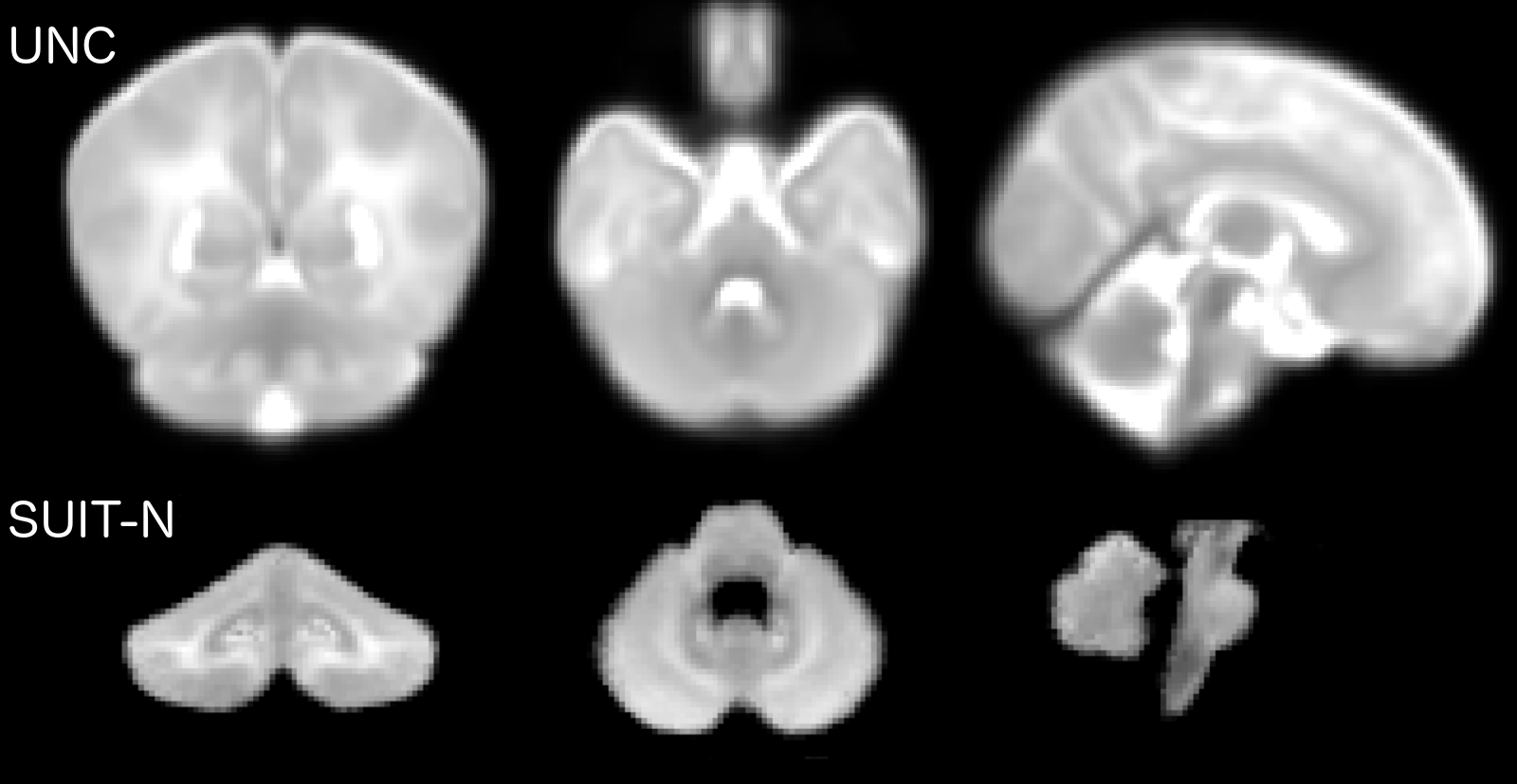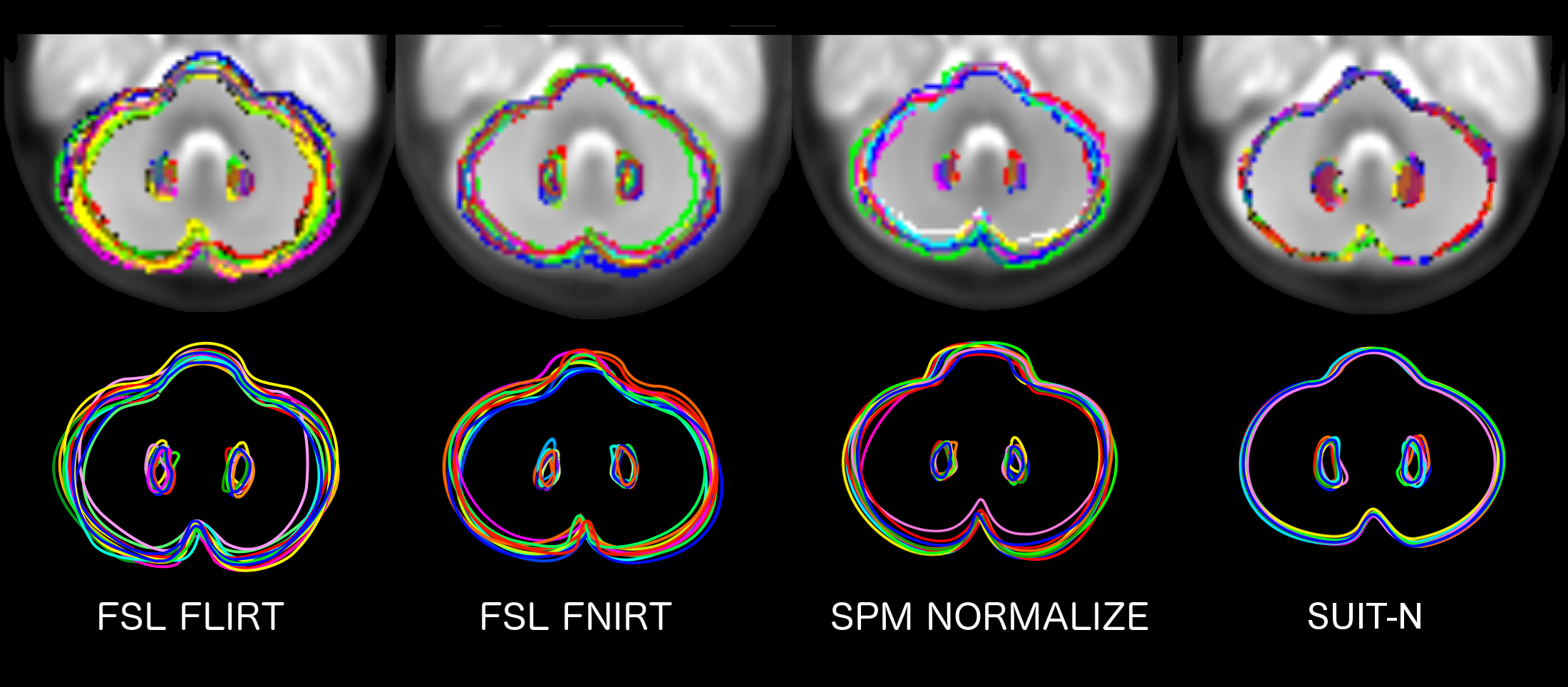Pediatric neuroimaging provides unprecedented insight into the development of the neonatal brain. SUIT-N is a new high-resolution atlas template of the neonatal human cerebellum and brainstem, based on the anatomy of 20 newborn individuals. The atlas is spatially unbiased, i.e. the location of each structure is close to the expected location of that structure across individuals in UNC atlas space. At the same time, the template preserves the anatomical detail of cerebellar structures through a nonlinear atlas-generation algorithm. By using automated nonlinear normalization methods, a more accurate intersubject-alignment than current whole-brain methods can be achieved.
The template and software are freely available as an open source SPM-toolbox. The toolbox allows you to:
- Automatically isolate cerebellar structures from the cerebral cortex based on an anatomical T2 image
- Achieve accurate anatomical normalisation of cerebellar structures
- Normalize functional imaging data for resting state fMRI group analysis
- Use Voxel-wise volumetry to determine patterns of cerebellar degeneration or growth
Please cite the use of this template as:
- Hernandez-Castillo, CR., Limperopoulos, C, Diedrichsen, J. (2019). A representative template of the neonatal cerebellum. Neuroimage, 184, 1, p. 450-454.

The toolbox has been developed by:
-
Carlos Hernandez-Castillo with help of Joern Diedrichsen. Thanks to Catherine Limperopoulos for sharing the data and the motivation.
Why a specialized template for neonates?

UNC template and SUIT-N compared
Although automated brain extraction and segmentation of the adult brain is well established, these approaches cannot easily be extended to the neonatal brain due to its inverted Gray Matter–White Matter contrast. Currently, anatomical studies of the neonatal brain use many different methodologies for analysis, leading to a confusing breath of outcomes. The most commonly used neonatal atlas template is the UNC template (Shi et al. 2011). This template was generated with data of 95 individual brains. However, as it can be seen on the right, the template provides very little contrast for cerebellar structures and in many cases the cerebellum is removed to improve the neocortical coregistration. Furthermore, Whole-brain normalization (affine or nonlinear) to this template leads to a large spatial spread of cerebellar localization (see figure below).We therefore developed a new template of the neonatal cerebellum and brainstem (SUIT-N).

Comparison between SUIT-N and whole-brain methods for neonatal normalization
This template is:
- based on the average anatomy of 20, healthy newborn individuals, with a gestational age of 40 weeks
- preserves the anatomical detail of the cerebellum to a much higher degree than the UNC whole-brain template.
- improves the normalization and overlap reducing the spatial variance in 60%
A few notes of warning:
- Relative to other templates, SUIT-N has a better gray/white matter contrast, however, the basic issue of the relatively weak myelination remains. For this reason, the segmentation of gray and white matter should not be used for VBM.
- For the same reason, DARTEL was not used for the normalization process. However voxel-wise volumetry can be calculated using the Jacobian of the transformation.
- All of our testings was done in SPM12, therefore we cannot guarantee that the toolbox will work under previous versions of SPM.